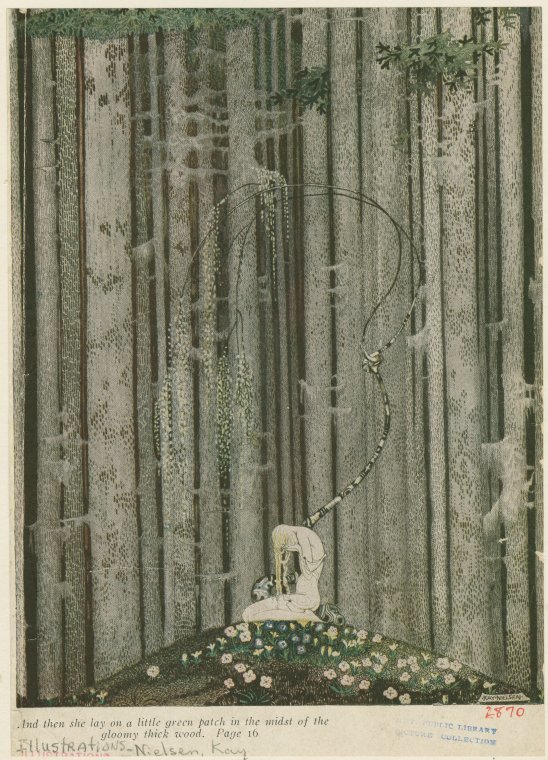"Fin de siècle" is a french term meaning "end of the century," and functions as an umbrella term referring to the aesthetic, moral, and social concerns explored by literary and artistic movements at the end of the nineteenth century. Movements associated with the fin de siècle included symbolism, art nouveau, and aestheticism, and were generally preoccupied with rejecting bourgeois norms and celebrating decadence, pessimism, irrationalism, and sexual experimentation. Apocalypticism was also a major theme for the fin de siècle and, according to the Tate, this era could be considered to have ended in 1914, at the oubreak of World War I. The fin de siècle artists were influenced by the Pre-Raphaelites and the Arts & Crafts movement, and would later in turn influence the Surrealist and Art Nouvea movements.
The fin de siècle also coincided with a revolution in the illustrative and graphic arts, with artists such as Aubrey Beardsley and Harry Clarke coming to the fore with their ornate, gothic, and romantic inspired designs accompanying stories by Edgar Allen Poe and Hans Christian Andersen. Poe's tales of terror and psychological disintegration may provide much thematic fodder for the artists of the fin de siècle, but what about the works of Andersen? It seems ill-advised, at least on the surface, to extend the salacious themes of the fin de siècle to works meant for children. But those familiar with the original, pre-Disneyfied folk stories collected by the Brothers Grimm and Andersen know that they were brimming with violence, macabre imagery, and sexual undertones. And, it should be noted that this is also the era that witnessed the groundbreaking research of Sigmund Freud, forever changing our understanding of childhood sexuality and subverting the Enlightenment notion of the modern, rational subject. Also of note is the fact that, in England, the fin de siècle coincided with the end of the Victorian era. It should be no surprise then, that the artists of the fin de siècle had a renewed interest in classic children's literature, as it can be read as exemplifying the tension between polite society and the repressed libidinal impulses that underpin it.
This site presents ten works of children's book illustrations selected from the New York Public Library digital collections that epitomize the style of the fin de siècle, dated between 1902-1914. The artists represented include the Danish illustrator Kay Nielsen, the French-English illustrator Edmund Dulac, and the English illustrator Arthur Rackham.
